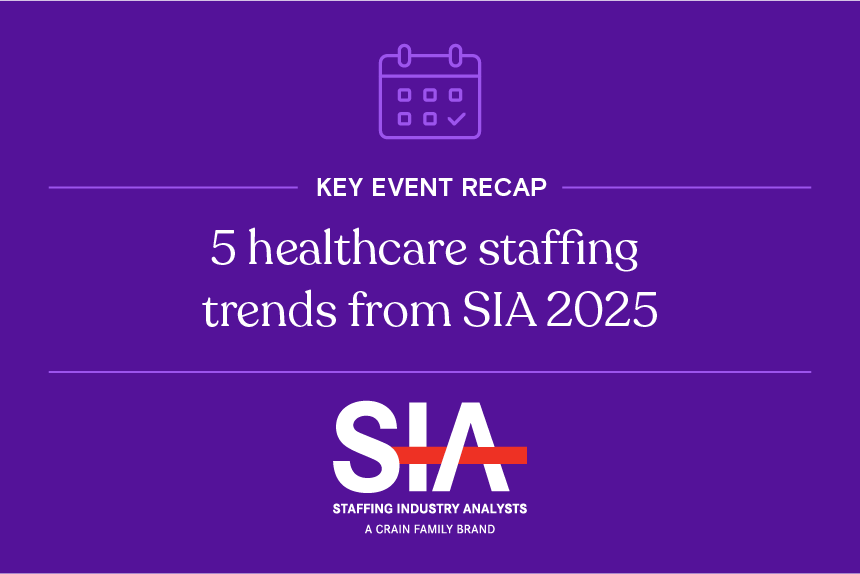According to a 2018 press release from the U.S. Census Bureau, by 2030 the 65 and older population are expected to outnumber children for the first time in U.S. history—with a projected 1 in every 5 residents of retirement age.
With this so-called “silver tsunami” comes a rise in the number of long-term care facilities across the nation. In fact, the industry has already begun responding to the pressures of these growing patient volumes.
In just the past two years, Definitive Healthcare has added almost 1,500 new assisted living facilities alone to our long-term care database. On average, we’ve added a total of about 2,600 other long-term care facility types to our database over the past five years.
This surge in the aging patient demographic has begun to impact the healthcare industry in other ways, as well—from physician and healthcare staffing shortages to an increased number of opportunities in the pharmaceutical, medical device, and telehealth markets.
Wearable technologies and remote monitoring solutions, for instance, represent a high-growth sector in the telehealth market—particularly for rural, at-risk, or elderly patients. While cost and compatibility concerns slow the integration of these devices within a clinical setting, long-term care facilities are still utilizing technology solutions in other ways.
Definitive Healthcare’s long-term care database tracks technology utilization and executive information, as well as financial and clinical metrics for nearly 40,000 assisted living facilities (ALFs), 18,500 skilled nursing facilities (SNFs), 16,400 home health agencies (HHAs), and more than 6,800 hospices across the U.S.
In this blog, we’ll be comparing technology use across long-term care facility types with a particular focus on tech trends at hospices.
Top 5 reported hospice technologies

Fig 1 Chart represents the top 5 reported technologies by number of hospices reporting installation. From Definitive Healthcare’s Expert Premium Content platform. Accessed November 2019.
With fewer than 7,000 locations, hospices represent the smallest share of long-term care facilities tracked by Definitive Healthcare. Those facilities, however, report a total of 79 different technologies used across hospice organizations.
Hospice information systems represent the greatest number of technologies used—with a total of 994 reported installations in 2019. Electronic health records (EHRs), home health administrative systems, home health clinical systems, and productivity solutions are also included in the top five most-utilized hospice technologies.
What is most notable about technology trends across long-term care facilities is how distinctive they are from one facility type to the next. A myriad of different factors might influence which technologies a long-term care facility chooses to utilize for improved patient care and experience, including: cost, facility size, number of personnel, average length of stay, or type of inpatient care.
Residents of an assisted living facility, for instance, do not require supervision from nurses or other medically trained personnel and are instead provided limited support with daily living activities. Because of this, ALFs utilize far fewer electronic health record or clinical technology systems than other long-term facilities offering more intensive patient care. Human resource technologies are, in fact, the most reported among assisted living facilities.
In contrast, skilled nursing facilities—which provide inpatient nursing care to patients undergoing medically-necessary rehabilitation treatment—rely heavily upon clinical support technologies. With a total of 11,772 reported installations of electronic health record systems in 2019, skilled nursing facilities employ the most EHR technologies of all long-term care facilities combined.
Perhaps unsurprisingly, home health administrative and home health clinical systems are two of the most-reported technology installations among home health agencies this year.
Epic Systems leads technology market share at hospices

Fig 2 Chart represents the top 5 technology market share vendors by percent of hospice installations. From Definitive Healthcare’s Expert Premium Content platform. Accessed November 2019.
On a more granular level, we’re also able to segment technology use at long-term care facilities by vendor market share. Accounting for almost 50 percent of all hospice technology installations, Epic Systems holds the largest technology market share at U.S. hospices.
Epic Systems is a proprietary electronic medical record software vendor used widely across the healthcare industry. Homecare Homebase, a cloud-based administrative solution for hospice and home health agencies, holds a competitive market share with just over 44 percent of reported hospice technology installations.
Brightree, Wellsky, and Netsmart Technologies—home healthcare solution and electronic medical record systems, respectively—are also among the top five vendors with the greatest market shares at U.S. hospices.
Homecare Homebase, Epic Systems, and Netsmart Technologies also command the market share at home health agencies. Homecare Homebase leads with 48 percent of home health administrative market share, and 33.5 percent of home health clinical technology market share. Epic Systems accounts for 23.4 percent of the home health clinical technology installations, and 10.5 percent of all home health administrative technologies at U.S. hospices.
Other top vendors include PointClickCare—a cloud-based EHR software for long-term post-acute care providers—with a leading 37 percent share of electronic health record technologies at skilled nursing facilities.
Learn more
Interested in learning more about technology utilization at long-term care facilities, and how leveraging this information can help you identify new sales opportunities and expand your target market? Definitive Healthcare tracks technology infrastructure and implementation data for over 81,000 U.S. long-term care facilities. Start a free trial today to see how you can:
- Receive news & intelligence alerts about changes in your target market
- Access affiliations data to identify new sales opportunities
- Segment data by category, product, vendor, or technology type to strengthen your sales strategy





